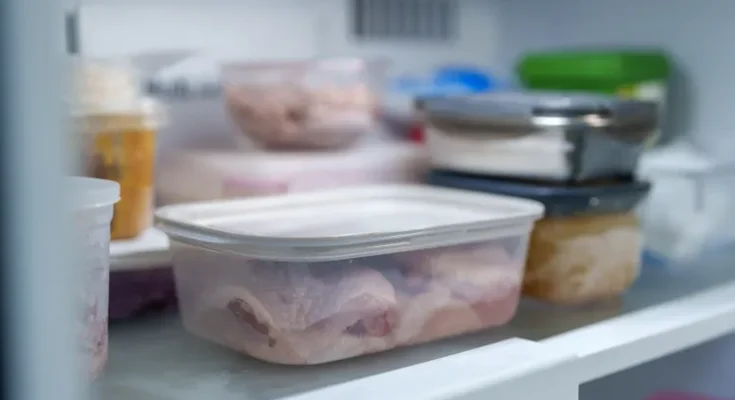A food storage shares whether a moldy container can be salvaged, or it should be tossed.
You’ve probably opened the fridge to grab a container of leftovers, only to find fuzzy contents inside. Whether it’s pasta, soup, or salad, mold can take over if it sits in a container for too long. The question is, can you clean and safely reuse that container, or should the whole thing land in the trash?
Plastic food storage containers are designed to be reusable, but when mold is involved, extra precautions are necessary. Mold spores can cling to porous surfaces, and even after washing, lingering odors or stains might leave you unsure if the container is truly clean.
But, before you throw it away, know that most plastic food storage containers can be salvaged with the correct cleaning method. With the help of an expert, here’s what you need to know about washing, disinfecting, and determining whether your moldy container is safe to use again.
Why Does Mold Grow So Easily in Plastic Containers?
Since mold flourishes in warm, moist environments (such as on the shower tiles or air conditioner units), a sealed container of leftovers can create the perfect conditions for it to grow. As food breaks down, mold spores in the air settle and grow, resulting in fuzzy, discolored patches. The longer food remains in the container, the deeper the mold can penetrate porous surfaces, including certain types of plastic.
While mold is not always dangerous (hello, blue cheese!), some strains can produce mycotoxins, which can be harmful if ingested. This risk of contamination makes it essential to clean moldy containers thoroughly before using it again.
How to Clean Moldy Plastic Containers
If you spot mold in your containers, there’s no need to panic, as it most likely can be easily cleaned. Follow this step-by-step cleaning guide, with tips from the pros at Rubbermaid.
Dispose of the contents: Start by carefully emptying the container of food and mold. To avoid inhaling mold spores, place the food in a sealed bag before discarding it. Rinse the container with hot water to remove as much residue as possible.
Soak in a solution: Rubbermaid suggests using white vinegar (the most effective at tackling mold) to deep clean the container. Fill it with equal parts vinegar and warm water before carefully replacing the lid. Leave it in a spot away from children or pets and allow the vinegar to work its magic for anywhere from thirty minutes to an entire week.
Scrub the container: When you’re done soaking the container, wash it with dish soap and warm water. Rubbermaid suggests lightly using a scrub brush if you have one. This will ensure you get into any grooves or crevices and that all the mold is removed.
Dry completely: Since mold thrives in moisture, ensure the container is completely dry before storing it. Rubbermaid recommends using a clean cloth or towel, but you can also let it air dry in direct sunlight if possible, as UV rays naturally act as a disinfectant and can help kill any remaining mold spores and eliminate odors.
Disinfect further: If you’re still a little shaky about reusing a container, even after going through the above process, you can take disinfecting a step further. Dilute bleach with water (the ratio should be one tablespoon of bleach per one gallon of water), fill the container, and allow it to soak for a few minutes before rinsing it with warm, soapy water and letting it dry.
How to Prevent Mold in Plastic Food Containers
The best way to prevent mold from forming in food storage containers is not to let leftovers linger too long. We all know accidents happen, however, so here are some additional methods you can take to avoid unpleasant surprises.
Store food properly: Refrigerate leftovers within two hours of cooking and aim to use airtight containers to prevent moisture buildup.
Label and rotate: Mark containers with dates to keep track of leftovers. Follow the FIFO rule and consume older foods first.
Clean containers immediately: Wash containers as soon as they are emptied to stop mold spores from having a chance to spring up.
Add baking soda: Keep a small open container of baking soda in your fridge to help absorb odors and create less favorable conditions for mold.
Full dry containers: Moisture is the main cause of mold growth, so always make sure containers are completely dry before storing them.
How to Tell If It’s Time to Toss Your Tupperware
Not all food storage containers can be saved, despite your best efforts. If a container has stubborn stains, odors, or shows visible signs of wear and tear, it is best to replace it for safety reasons. Additionally, old or low-quality plastic containers starting to degrade may pose health risks beyond just mold, such as leaching harmful chemicals, like BPA, into food. If you decide it’s time to dispose of a container, check whether it is recyclable. Many plastic food storage containers are made from materials that can be recycled, so disposing of them properly will help reduce waste.



